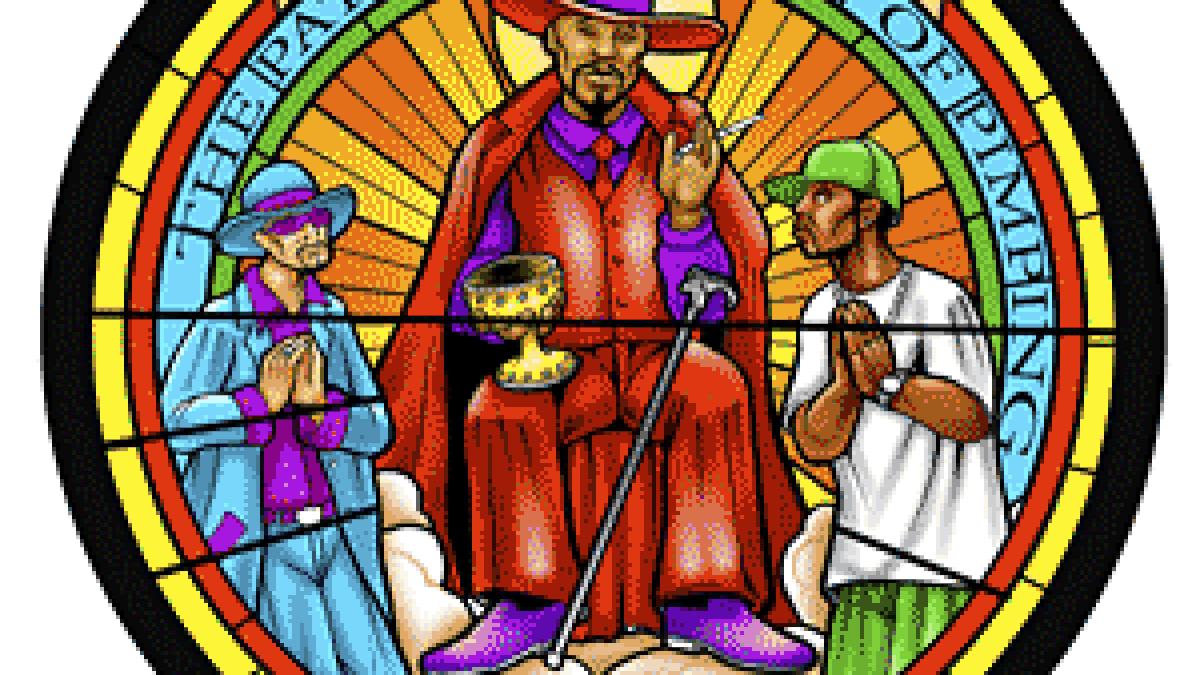You don’t have to look very hard to find the connection between contemporary rap and Cecil Brown’s new novel I, Stagolee, published this month by Berkeley’s North Atlantic Books. Even before the table of contents, an excerpt from the 1930s traditional folksong “The Ballad of Stagolee” makes it perfectly clear where rap’s roots lie: Stagolee was a good pimp, everybody did love/The whores and pimps swore by him/By the stars above.
That’s right: Before hip-hop was even conceived — before Jay-Z, Snoop Dogg, or 50 Cent — Stagolee was big pimpin,’ baby.
All the elements of pimp/playa/hustler rap existed in the African-American oral tradition a century ago, though some aspects of the game have changed. It hasn’t always been hard out here for a pimp, as the Oscar-winning Three 6 Mafia has claimed. Pimping was once “respectable in places like St. Louis, where it was legal for ten to fifteen years,” says Brown, an academic and former Express contributor.
Brown says Lee Shelton — the real-life inspiration for Stagolee — was not only a pimp, but an entrepreneur, owning both a tavern and a livery stable, where he maintained a fleet of horse-drawn carriages (the precursors to today’s limos). Moreover, pimps like Stagolee and the city of St. Louis in particular were on the cutting edge of the urbanization of American culture during what’s now called the ragtime era, Brown says.
“Several things were coming together” at the turn of the century, he says. Most significantly, “We were inventing a nightlife, and the nightlife took place in the bordello areas and so forth.” Bordellos and politics became synonymous; the red-light district was often where backroom deals were made. “That’s where you’d hear ragtime music; that’s where you’d be likely to hear Scott Joplin play in one of these clubs,” Brown says, adding that Shelton was a contemporary of both Joplin and another well-known ragtime musician, Tom Turpin.
Piano-riff-based compositions such as Joplin’s “Maple Leaf Rag” served as a soundtrack to this emerging nightlife, while the cakewalk dance crossed over to white America and became a phenomenal entertainment trend. In this societal context, Brown says, pimping “wasn’t seen as a negative, it was seen as part of the sporting life.”
I, Stagolee portrays the protagonist — a mythical figure and the subject of hundreds of folk and blues tunes — as a true gentleman of leisure, a charismatic charmer who seduces attractive women with his verbal skills, and turns to violence only as a last resort. The modern-day image of a pimp is as an exploiter of women, but Brown says that wasn’t always necessarily the case. “You gotta understand, too, the pimps never looked down on the women who were whores,” he explains. “It was the Irish cops, it was the people in their own neighborhoods, their own families, who looked down on them.”
Stagolee is often referred to as that bad man in song, yet Brown sees him differently: “I tried to paint a picture of Stagolee as kind of a patron saint for these prostitutes, who would never turn a prostitute away if she needed some comfort, who never shamed her or put her down for what she was forced to do, or even what she wanted to do, in some cases. I based that on my research, but I also based it on my feeling for this guy who started something.”
One of Brown’s sources for the book was a police gazette from 1890. “They’d always feature these pimps, and they’d present them like entrepreneurs or agents for these beautiful girls,” he says. And though economics was a factor, race played into it as well. “I’ve run across statements like this: ‘The white man was used to having the black woman under slavery, and now he had to pay for it,'” Brown says. “That was part of what the black pimps enforced, that they would pay.”
The parallels between the ragtime era and hip-hop, Brown says, are fairly obvious ones: “There was a new music called ragtime, a new dance called the cakewalk, a new era around the turn of the century. And you can compare it to hip-hop in a way because, again, hip-hop brings a new dance, a new music, so forth and so on.” Verbal game-spitters like Ice-T, Kingpin Skinny Pimp, and Mac Dre (to name a few) are just some of the rappers who embody Stagolee’s legacy, whether they realize it or not.











